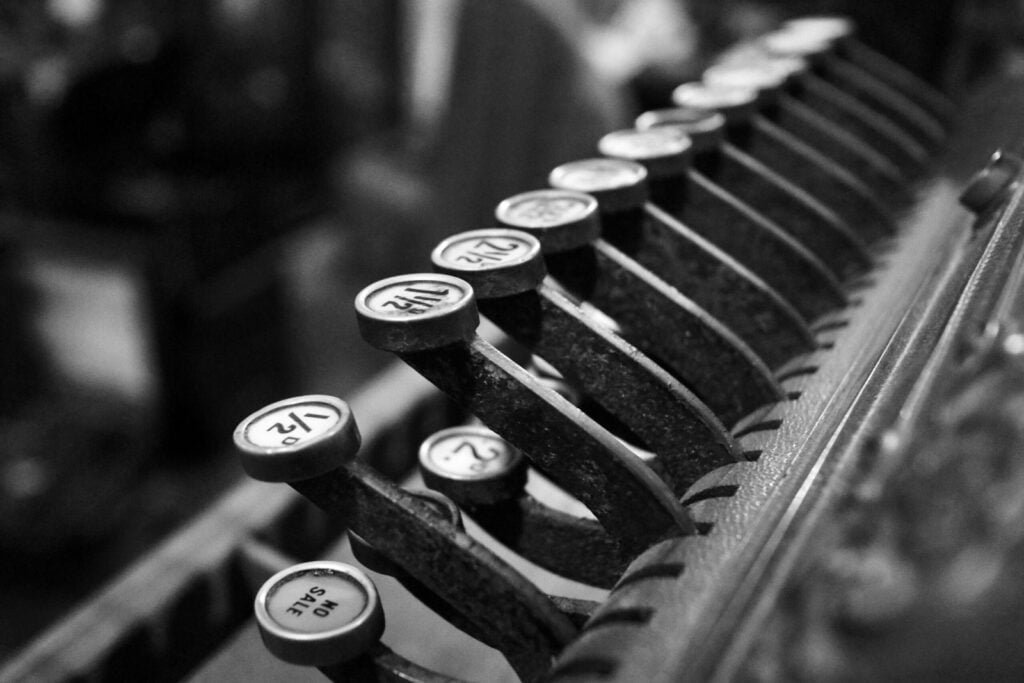Table of Contents

John Petrucci
Early Life and Introduction to Music
John Petrucci, born on July 12, 1967, in Kings Park, New York, emerged as a monumental figure in the world of progressive rock and metal. Petrucci’s journey into the realm of music was influenced profoundly by his familial environment, which was steeped in musical traditions. His parents, though not musicians themselves, nurtured an appreciation for music, setting the stage for Petrucci’s early interest in guitar playing.
At the tender age of eight, John Petrucci picked up his first guitar. He recalls the moment as nothing short of transformative, kindling a passion that would steer the course of his life. His early exploration of the instrument was notably self-motivated; he dedicated countless hours to mastering the fundamentals. This initial dedication is a testament to his enduring work ethic and predilection for high standards, qualities that would later define his illustrious career.
John’s early education in music was marked by an eclectic exposure to various genres, from classical compositions to the rock anthems of the 70s and 80s. He was particularly inspired by guitar legends such as Jimmy Page, Joe Satriani, and Steve Morse. These influences are evident in his work with Dream Theater, where he amalgamates complex musical structures with emotional depth in his performances.
In addition to his autodidactic efforts, Petrucci took formal music lessons during his formative years. His dedication to learning allowed him to explore advanced techniques and musical theories, laying a robust foundation for his subsequent achievements. Combining natural talent with rigorous practice, John Petrucci exemplifies the quintessence of a self-made maestro, whose early life’s experiences and influences were pivotal in shaping his career.
Formation and Success of Dream Theater
In 1985, John Petrucci, along with his friends from Berklee College of Music, formed a band that would later become known as Dream Theater. Initially named Majesty, the group was founded by Petrucci, bassist John Myung, and drummer Mike Portnoy. The trio’s shared vision of creating complex, multi-layered music set the foundation for Dream Theater’s unique sound. Petrucci’s intricate guitar work, harmoniously balanced with Myung’s bass rhythms and Portnoy’s dynamic drumming, quickly distinguished the band within the progressive metal genre.
Petrucci, as the band’s primary guitarist and a core songwriter, played an instrumental role in the evolution of Dream Theater’s music. His virtuosic guitar skills and innovative compositions helped shape the band’s early sound. This became evident with their debut album, “When Dream and Day Unite,” released in 1989. Despite modest initial success, the album laid the groundwork for their subsequent rise to fame.
Their breakthrough came with the release of “Images and Words” in 1992, which included the hit single “Pull Me Under.” This album showcased not only Petrucci’s exceptional guitar work but also Dream Theater’s ability to blend intricate musicality with accessible melodies. This balance struck a chord with both metal enthusiasts and the broader music audience, propelling the band into international stardom.
Throughout the 1990s and 2000s, Dream Theater continued to build on their success with critically acclaimed albums like “Awake,” “Metropolis Pt. 2: Scenes from a Memory,” and “Six Degrees of Inner Turbulence.” John Petrucci’s contributions were pivotal in these works. His compositions pushed the boundaries of progressive metal, integrating complex time signatures, elaborate solos, and thematic cohesiveness, which became hallmarks of the band’s sound.
Petrucci’s influence extended beyond the studio. His live performances brought to life the technical brilliance of Dream Theater’s music, earning him a revered status among guitarists and fans alike. The band’s commitment to musical excellence, driven by Petrucci’s relentless pursuit of innovation, led to numerous tours and a loyal global fanbase.
The journey from Berklee College of Music to becoming a renowned progressive metal band underscores the importance of Petrucci’s role in Dream Theater. His artistry and vision have been intrinsic to the band’s ongoing legacy, crafting a career that continues to inspire and influence the world of progressive music.
Technical Skills and Influences
John Petrucci is renowned for his phenomenal technical proficiency on the guitar, a trait that sets him apart in the world of progressive metal. His practice routines are nothing short of rigorous, often involving hours of meticulous exercise to perfect his craft. Among the myriad techniques that Petrucci employs, alternate picking stands out as a hallmark of his playing. This technique involves swiftly alternating the pick strokes, allowing for impressive speed and precision. It’s a cornerstone of his ability to execute rapid, complex passages with remarkable clarity.
Another notable technique in Petrucci’s arsenal is sweep picking. This involves a fluid, sweeping motion across multiple strings, enabling the play of arpeggios at a breakneck pace. Sweep picking, combined with his use of legato – a technique where notes are played smoothly, with minimal gaps between them – gives his solos their signature fluidity and expressive depth. These techniques aren’t just flashy; they’re integral to the detailed and articulated nature of his music.
Petrucci’s influences span a diverse range of genres and players. He draws inspiration from classical music, rock, and jazz, synthesizing these elements into his unique sound. Guitar virtuosos like Steve Morse, Al Di Meola, and Yngwie Malmsteen have left a notable imprint on his style. From Morse, he learned the importance of mastering various genres, while Di Meola introduced him to complex, syncopated rhythms. Malmsteen’s neo-classical phrasing and rapid fire technique also found their way into Petrucci’s playbook.
The confluence of these influences and techniques has resulted in a guitar playing style that is as multifaceted as it is technically brilliant. Whether performing with Dream Theater or on his solo projects, John Petrucci consistently showcases an unparalleled mastery over the instrument. His dedication to evolving as a guitarist while staying true to his diverse influences makes him a revered figure in the guitar community. Not only does he push the boundaries of technical proficiency, but he also knows how to integrate these skills seamlessly into his compositions, making his work both challenging to play and deeply musical.
Solo Career and Projects
John Petrucci, renowned as the guitarist for Dream Theater, has an extensive solo career that displays his virtuosic talent and creative prowess beyond the progressive metal realm. His solo works highlight his ability to blend intricate compositions with emotional depth, resonating strongly within the music community.
Petrucci’s debut solo album, Suspended Animation, released in 2005, is a testament to his technical brilliance and compositional skill. The album is a rich tapestry of guitar mastery, featuring complex rhythms, soaring melodies, and a diverse array of sonic textures. Tracks like “Jaws of Life” and “Glasgow Kiss” have become iconic, showcasing his ability to intertwine aggressive riffs with lyrical solos. The album received significant acclaim from critics and fans alike, cementing Petrucci’s status as a formidable solo artist.
Beyond his solo albums, John Petrucci has been involved in numerous collaborative projects. One of the most notable is Liquid Tension Experiment, a supergroup formed with Dream Theater bandmate Mike Portnoy, bassist Tony Levin, and keyboardist Jordan Rudess. The two studio albums, Liquid Tension Experiment (1998) and Liquid Tension Experiment 2 (1999), are celebrated for their eclectic compositions, blending progressive rock, metal, and jazz fusion elements. The spontaneous creativity and technical proficiency displayed in these albums have garnered widespread acclaim and significantly influenced the progressive music landscape.
Petrucci’s collaborations extend to working with renowned artists and contributing to various projects. His participation in G3, an annual guitar tour organized by Joe Satriani, has further showcased his virtuosity alongside other guitar legends like Steve Vai and Eric Johnson. These collaborative efforts underscore his versatility and ability to synergize with other musical greats, enhancing his already stellar reputation.
John Petrucci’s solo career and collaborative projects reflect his continual evolution as a musician. His pursuits outside of Dream Theater not only highlight his technical abilities but also reveal his deep artistic vision, making a lasting impact on the global music scene.
Gear and Equipment
John Petrucci’s gear and equipment play a pivotal role in shaping his distinctive sound and remarkable performance capability. Over the years, Petrucci has become synonymous with Ernie Ball Music Man guitars, having developed several signature models under the brand. These guitars feature custom specifications that cater to his playing style, including advanced pickup configurations, versatile tone controls, and ergonomic designs.
Among his most notable signature guitars are the Majesty and JP series. The Majesty, distinguished by its sleek design and neck-through construction, offers exceptional sustain and comfort. It includes high-output humbucking pickups, coil-splitting options, and a piezo pickup system, providing a wide tonal palette. The JP series, known for its reliability and precision, is equally celebrated for its rich, dynamic tones and versatile performance capabilities.

Sterling By Music Man 7-string John Petrucci Signature JP70 Electric Guitar – Mystic Dream
Petrucci’s amplification setup typically involves Mesa/Boogie amplifiers. Known for their robust build and versatile tonal options, these amps have been a cornerstone of his rig. Both the Mark V and JP-2C models provide the heavy, articulate sound that Petrucci is renowned for. The JP-2C, a collaborative effort between Petrucci and Mesa/Boogie, aims to deliver the ultimate tonal experience, incorporating features that address the guitarist’s specific needs.
In addition to guitars and amplifiers, Petrucci employs a meticulously crafted pedalboard to further expand his sonic capabilities. His custom setup includes a range of effects pedals, from overdrives and delays to choruses and reverbs, enabling him to create lush soundscapes and intricate textures. Notable effects units include the TC Electronic Dreamscape, which combines multiple modulation effects in a single unit, and the Dunlop Cry Baby Wah, essential for his expressive soloing.
Strings and picks are other crucial components of Petrucci’s gear arsenal. He uses Ernie Ball’s RPS Slinkys and a custom set of picks that provide the right balance of attack and control. These choices in gear reflect Petrucci’s relentless pursuit of tonal excellence and his desire to push the boundaries of his instrument.
Teaching and Influence on Other Musicians
John Petrucci’s commitment to music education has been an integral aspect of his extraordinary career. By sharing his wealth of knowledge through various instructional methodologies, Petrucci has made significant contributions to the guitar community. His series of instructional videos such as “Rock Discipline” have become essential learning tools for aspiring guitarists, offering in-depth insights into advanced techniques, practice routines, and theoretical understanding.
In addition to his instructional materials, Petrucci has conducted numerous clinics and workshops worldwide, repeatedly demonstrating his desire to mentor and inspire the next generation of musicians. These sessions offer a rare opportunity for participants to witness his technical prowess up close, while also gaining practical advice directly from a guitar virtuoso.
The impact of John Petrucci on contemporary guitarists cannot be overstated. His innovative approach and phenomenal skills have set new standards in the world of progressive metal and beyond. His influence is evident in the playing styles of many modern guitarists who cite him as a pivotal source of inspiration. Guitarists like Mark Holcomb of Periphery and Misha Mansoor have openly acknowledged how Petrucci shaped their own musical journeys.
Testimonials from renowned musicians further illustrate Petrucci’s reach within the guitar community. Steve Vai once stated, “John Petrucci’s dedication to the craft and his technical abilities are absolutely mind-blowing. He has inspired countless musicians to push their own boundaries.” Similarly, Paul Gilbert noted, “I’ve spent countless hours studying John Petrucci’s videos. The clarity and precision in his lessons helped me understand complex concepts and refine my techniques.”
Through his continuous efforts in music education, John Petrucci has cultivated an enduring legacy. His supportive attitude towards fellow guitarists and dedication to teaching ensures that his impact will be felt for many generations to come, solidifying his role not just as a performer, but also as a vital educator in the world of music.
Awards and Recognition
John Petrucci’s illustrious career is distinguished by a plethora of awards and recognitions, affirming his status as one of the premier guitarists in the world. His virtuosic prowess and innovative contributions to the genre have garnered him numerous accolades from prestigious music institutions, publications, and the broader guitar community. These honors not only celebrate his technical skill but also underscore his influence on contemporary progressive metal and rock music.
Petrucci has repeatedly been featured in leading guitar magazines, achieving high standings in various ‘best of’ lists. His consistent inclusion in Guitar World’s annual reader’s poll is a testament to his enduring popularity and influence. Over the years, he has clinched several Guitar World awards, including Best Metal Guitarist and the coveted MVP title, reflecting his seamless blend of technical finesse and creative expression.
The guitar maestro has also received significant recognition from the music industry at large. His work with the band Dream Theater has earned Grammy nominations, attesting to the critical acclaim and widespread appeal of his contributions. Notably, Dream Theater’s 2019 album “Distance Over Time” showcased Petrucci’s stellar guitar work and received substantial acclaim, further bolstering his reputation.
In addition to awards from industry bodies and publications, John Petrucci has been honored by his peers and the guitar community. Notably, in 2001, he was inducted into the Guitar Center’s RockWalk, a revered accolade that celebrates the careers of influential rock musicians. His recognition extends to various guitar-specific awards, including being named a Guitar Idol finalist and receiving the SENA European Guitar Award in 2012, celebrating his outstanding contribution to the guitar world.
These accolades reflect the widespread admiration and acknowledgment of John Petrucci’s exceptional talent, influence, and relentless pursuit of musical excellence, firmly establishing him as a pivotal figure in the realm of guitar music.
Legacy and Future Endeavors
John Petrucci’s indelible mark on the world of guitar and progressive metal is characterized by his technical prowess, innovative compositions, and dedication to the craft. His work with Dream Theater set new standards in musicianship, blending complex melodies with intricate rhythms and pushing the envelope of what is possible on the guitar. Petrucci’s influence resonates through a myriad of guitarists and bands inspired by his distinctive style and uncompromising pursuit of excellence.
Beyond his established works, Petrucci remains an active force in the music community. Engaged in various side projects and endorsements, he continues to explore new facets of his musical abilities. Recent endeavors, such as his solo albums, showcase a broad range of styles and further cement his status as a versatile artist. His collaborative efforts, including the G3 tours with other guitar luminaries, serve both as a platform for showcasing his skill and as a mentorship to younger guitarists.
His commitment to innovation is evident in his constant experimentation with new sounds and technology. Petrucci’s future plans include pushing the boundaries of progressive metal even further while retaining the authentic, emotive elements that define his music. As he embarks on new projects, both with Dream Theater and independently, fans and fellow musicians eagerly anticipate his next groundbreaking contribution to the genre.
The legacy of John Petrucci is built on a foundation of extraordinary talent, relentless work ethic, and a passion for music that inspires continuous growth and exploration. As he continues to forge ahead, Petrucci’s influence on the next generation of guitarists and his contributions to the musical landscape will undoubtedly endure, securing his place as a maestro of American guitar. With a blend of anticipation and admiration, the music world awaits the evolution of an already legendary career that shows no signs of slowing down.



